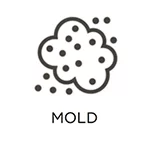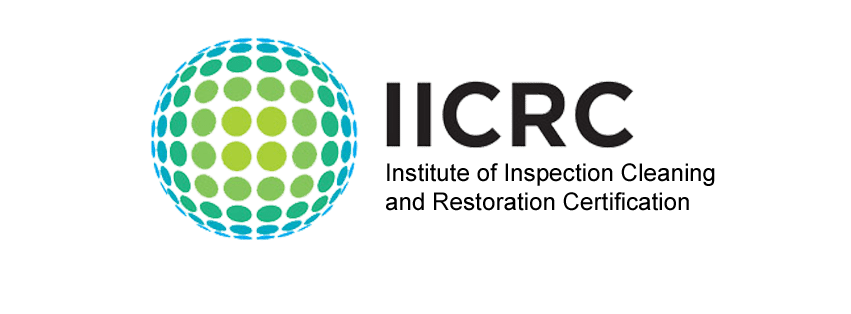RestorationMaster Disaster Restoration And Recovery
(415) 532-1836
Many homes and buildings experience water damage at some point because it can be caused by flooding, sewage, heavy rain, and leaks and the severity of the water damage can differ widely depending on the scope of the damage and how much time it is given to spread. Excess water can spread through a building rather easily by getting absorbed in porous building materials such as insulation, wood, and drywall which can lead to more extensive structural damage as well as mold growth. RestorationMaster provides water damage restoration services for homes and businesses affected by excess water in San Francisco, CA, and the surrounding areas We respond to water damage calls within 2 to 4 hours to help minimize the extent of the damage.

Contact RestorationMaster 24 hours a day for water damage restoration in San Francisco, CA, and the surrounding areas.
Water Damage Restoration Process
The technicians of RestorationMaster have over 35 years of experience dealing with water damage and we can remove excess water and moisture from commercial and residential settings. Our equipment is among the best available in the industry and includes hydroxyl technology, air movers, dehumidifiers, floor mat systems, and other specialty equipment that can remove excess water and moisture from the furnishings and structural elements of your home.
Watch the RestorationMaster video for more information on Water Damage Restoration Services:
What to Do in Case of Water Damage
- Repair the source of the water damage because the restoration process cannot begin without stopping the source of the damage.
- Put valuable items out of sight in a dry, safe location.
- If there is significant water damage throughout the entire home, turn off the power. We will handle the power issue during the restoration process.
- We can also provide other restoration services that may be needed along with water damage restoration such as content restoration and pack-outs as well as upholstery cleaning.
What NOT to Do After Water Damage
- Do not dispose of the broken part that caused the water damage, the insurance provider may need to see it.
- Do not ever let water damage dry on its own, it will only spread further.
Sewage Backup Cleanup
Sometimes sewer backups may be the source of water damage in your home and if this is the case, then you also have to worry about viruses and bacteria such as hepatitis and E. coli in addition to the damage caused by the water. Our technicians are properly trained to remove hazardous waste materials left by sewage backup and clean and sanitize the area to make it safe.
Sewage water adversely affects human health and causes serious damage to house structures. Sewage is difficult to clean and its stench permeates the building materials for a long time. The longer you leave the drain smells, the stronger it will be, the more bacteria will multiply, and the more harmful it can be to the surrounding environment. Mold easily grows in sewage water. Water stains and black mold can quickly appear on flooring, baseboards, and other housing materials. Therefore, in cases of sewage backup, avoid contact with the water and call RestorationMaster right away.
Flood Damage Cleanup
Numerous factors can lead to flooding in your homes and buildings. Harsh weather conditions, for instance, play a prominent role in causing indoor flooding. Severe storms often lead to flooding and substantial leaks, while extremely cold temperatures can bring about the freezing and bursting of pipes. Another prevalent situation involves a blocked main sewer line, which can result in a sewage backup. These scenarios are often at the forefront of water damage concerns for many property owners.
Our Flood Cleanup Approach:
- Immediate Response: Our team is available around the clock, ensuring a quick reaction to your flood-related emergencies.
- Comprehensive Assessment: We promptly evaluate your property to identify the source of the flooding and assess the full extent of the damage.
- Customized Drying Plan: We develop and execute a specialized water and moisture extraction strategy tailored to your unique requirements.
- Restoration and Cleaning: We carry out a thorough cleaning and restoration process to return your property to its pre-flood condition.
- Final Inspection: To ensure quality and completeness, we perform a meticulous final inspection before concluding the restoration process.
Contact RestorationMaster for Water Damage Restoration in San Francisco, CA
As soon as you find water damage in your home or office, contact RestorationMaster for water damage restoration services in the San Francisco, CA area. We have the training and equipment to provide effective water damage restoration services, and we are a pre-approved vendor for many local insurance companies. You can call us 24 hours a day at (415) 532-1836 to respond to water damage emergencies in San Francisco.
Related Water Damage Restoration Services in California
Water Damage Repair in San Mateo, CA
Water Damage Restoration in San Jose, CA
Water Damage Cleanup in Palo Alto, CA
Water Damage Remediation in Los Altos, CA
Related Water Damage Tips and Information
How Seawalls Can Help Protect Your Home from Flooding
For anyone living in flood-prone regions, making an investment in a seawall can prove to be a highly effective measure for safeguarding their homes and properties against potential damage. Seawalls are engineered structures strategically erected along shorelines or riverbanks with the primary purpose of impeding the ingress of water onto the land. By absorbing the force of waves and assisting in erosion control, they play a crucial role in mitigating water-related risks. Below is how proper utilization of seawalls can significantly minimize flood damage.
- Seawalls create a physical barrier against high tides and storm surges
- Seawalls reduce the risk of flooding
- Seawalls reduce the erosion of soil due to flooding
- Seawalls keep your landscape intact during floods
How to Determine if Water Damage is Fresh or Old
Spotting signs of water damage can be worrisome for many homeowners. After all, what appears to be visible water damage might only be the tip of the iceberg, hinting at a more extensive and concealed issue. Fortunately, in many cases, addressing recent water damage is typically less arduous than tackling long-standing damage. Below is the tip to differentiate the disparities between old and new water damages.
- Counting the water rings
- Touching the damaged surface
- Finding mold colonies
- Noticing structural decay
Understanding How Hurricanes Form and How to Protect Yourself
Hurricanes are immense weather systems characterized by swirling winds and heavy rainfall. These tropical storms pose immense danger, capable of inflicting extensive damage to buildings and infrastructure, resulting in the loss of lives and properties. The rapid and unpredictable development of hurricanes makes preparation particularly challenging. In this article, we will delve into every aspect associated with the formation of hurricanes, including the conditions that give rise to them, how meteorologists predict their timing and location, and essential measures you can take to ensure your safety when they approach your area. Understanding the life cycle and underlying causes of hurricanes is crucial for safeguarding oneself during these potentially devastating natural disasters.
Frequently Asked Questions about Water Damage Repair
What should I replace after water damage?
- Hardwood Furniture
- Carpets and Upholstery
- Laminated Floor and Furniture
- Mattresses, Sofas, etc.
- Damaged Electrical Appliances
Does wet drywall always need to be replaced?
Water-damaged drywall should always be replaced because it may have already been compromised inside the structural integrity. If you don’t replace the drywall, over time, the damages will be visible on the surface s like discoloration, stains, peeling paint, cracks, leaks, and ultimately even collapses.
How long to wait after water damage?
Depending on the extent of the damage and the size of your home, it will take shorter or longer to dry. For a single flooded room, it may take an average of 3 days for full dehumidification.






